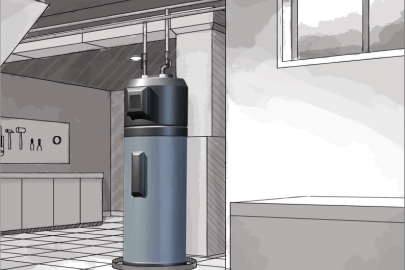Key Tips on Maintaining Your Home's Hot Water SystemEssential Tips on Maintaining Your Home's Hot Water System
Key Tips on Maintaining Your Home's Hot Water SystemEssential Tips on Maintaining Your Home's Hot Water System
Blog Article
They are making a few great annotation related to Tips on Maintaining a Water Heater as a whole in this great article which follows.

Warm water is vital for everyday comfort, whether it's for a revitalizing shower or washing recipes. To ensure your warm water system runs efficiently and lasts much longer, regular maintenance is vital. This short article offers functional pointers and insights on just how to keep your home's hot water system to stay clear of interruptions and expensive repairs.
Introduction
Preserving your home's warm water system might appear daunting, however with a couple of easy actions, you can guarantee it runs efficiently for years to find. This overview covers whatever from comprehending your warm water system to DIY upkeep pointers and knowing when to contact expert aid.
Importance of Preserving Your Warm Water System
Regular maintenance not just expands the lifespan of your warm water system yet also ensures it runs successfully. Overlooking upkeep can bring about lowered efficiency, higher energy costs, and even premature failing of the system.
Indications Your Warm Water System Demands Upkeep
Understanding when your warm water system requires attention can avoid significant concerns. Look out for indicators such as irregular water temperature, strange noises from the heating unit, or rustic water.
Comprehending Your Hot Water System
Prior to diving right into upkeep jobs, it's handy to recognize the basic components of your hot water system. Usually, this consists of the hot water heater itself, pipelines, anode poles, and temperature level controls.
Regular Monthly Maintenance Tasks
Routine regular monthly checks can help capture small concerns before they intensify.
Purging the Water Heater
Flushing your water heater removes sediment accumulation, enhancing effectiveness and extending its life.
Checking and Changing Anode Rods
Anode poles prevent corrosion inside the storage tank. Checking and changing them when worn is vital.
Examining and Changing Temperature Setups
Readjusting the temperature level setups makes certain ideal performance and safety.
Do It Yourself Tips for Upkeep
You can do a number of maintenance jobs on your own to keep your hot water system in top problem.
Looking for Leakages
On a regular basis examine pipes and connections for leakages, as these can bring about water damages and higher bills.
Testing Stress Relief Valves
Testing the stress relief valve ensures it operates appropriately and stops extreme stress accumulation.
Protecting Pipes
Shielding warm water pipelines minimizes warm loss and can save power.
When to Call an Expert
While do it yourself upkeep is advantageous, some issues call for expert proficiency.
Facility Problems Needing Professional Aid
Examples include major leakages, electrical problems, or if your hot water heater is regularly underperforming.
Routine Professional Upkeep Advantages
Professional upkeep can include detailed evaluations, tune-ups, and making certain conformity with security standards.
Verdict
Regular upkeep of your home's hot water system is essential for performance, long life, and price savings. By following these tips and recognizing when to seek expert help, you can make sure a reputable supply of warm water without unforeseen disturbances.
How to Maintain an Instant Hot Water Heater
Before tinkering with your hot water heater, make sure that it’s not powered on. You also have to turn off the main circuit breaker and shut off the main gas line to prevent accidents. Also turn off the water valves connected to your unit to prevent water from flowing into and out of the appliance. 2. When you’re done, you have to detach the purge valves’ caps. These look like the letter “T” and are situated on either side of the water valves. Doing so will release any pressure that has accumulated inside the valves while at the same time avoid hot water from shooting out and burning your skin. 3. When the purge valves’ caps are removed, you have to connect your hosing lines to the valves. Your unit should have come with three hoses but if it didn’t, you can purchase these things from any hardware or home repair shops. You can also get them from retail stores that sell water heating systems. Read the user’s manual and follow it to complete this task properly. When the hosing lines are connected, open the purge port’s valves. 4. You should never use harsh chemical cleaners or solutions when cleaning your unit. Make use of white vinegar instead. It should be undiluted and you’ll probably use about 2 gallons. 5. Now flush your water heater. This task should probably take about 40 minutes. We can’t give you specific directions for this because the procedure is carried out depending on the type, model and brand of your heater. With that being said, refer to the user’s manual. 6. When you’re done draining the unit, you have to turn off the purge port valves again. Remove the hosing lines that you earlier installed on each of the water valves. Put the valve caps (purge port) back in their respective places and be very careful so as not to damage the rubber discs that are found inside these caps. 7. Now that everything’s back in place, check your user’s manual again to find out how to reactivate your water heating system. 8. Once it is working, turn one of your hot water faucets on just to let air pass through the heater’s water supply pipes. Leave the tap on until water flows smoothly out of it. https://www.orrplumbing.com/blog/2014/september/how-to-maintain-an-instant-hot-water-heater/

As a keen person who reads about Water Heater Maintenance Tips You Can't Afford to Forget, I imagined sharing that piece of content was important. For those who appreciated our page if you please remember to pass it around. Many thanks for your time. Revisit us soon.
Click Here Report this page